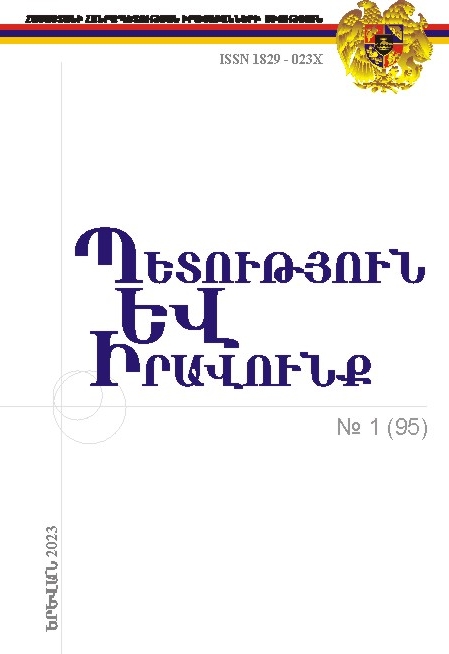THE SPECIAL CHARACTERISTICS OF THE COLLISION OF CRIMINAL LAW NORMS IN CASE OF MULTIPLE OFFENSES AND RELATED CRIMES
DOI:
https://doi.org/10.46991/S&L/2023.95.140Keywords:
Collision of criminal law norms, related counts, criminal law norm, qualification of crimes, multiplicity of crimes, ideal combination of crimes, real combination of crimesAbstract
Overcoming the collision of criminal law norms is an important issue in the crime classification process. The principles of criminal law oblige to accurately investigate the criminal conduct and to impose an appropriate criminal liability against those who committed the crime. Addressing the issue, however, remains a rather complex matter due to a series of objective and subjective circumstances.
The collision of criminal law norms is an encompassing phenomenon that is present in the entire process of the development of criminal law relations – from the fact of committing the crime to the removal or nullification of the criminal record. Addressing the issue, however, remains a rather complex matter due to a series of objective and subjective circumstances.
The following article discusses the special characteristics of collision of criminal law norms in case of multiple crimes and related crimes, as well as the distinction between the two.
The subject of the study was examined with the use of general and special scientific methods, such as dogmatic, comparative legal, logical and legal modelling.
Based on the conducted research, the article provides both scientific and practical recommendations in relation to multiplicity of crimes, specifically ideal and real combination of crimes, as well as with regard to qualification of crimes in case of multiple related counts.
Downloads
Published
Issue
Section
License
Copyright (c) 2023 State and Law

This work is licensed under a Creative Commons Attribution-NonCommercial 4.0 International License.

